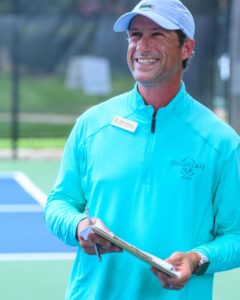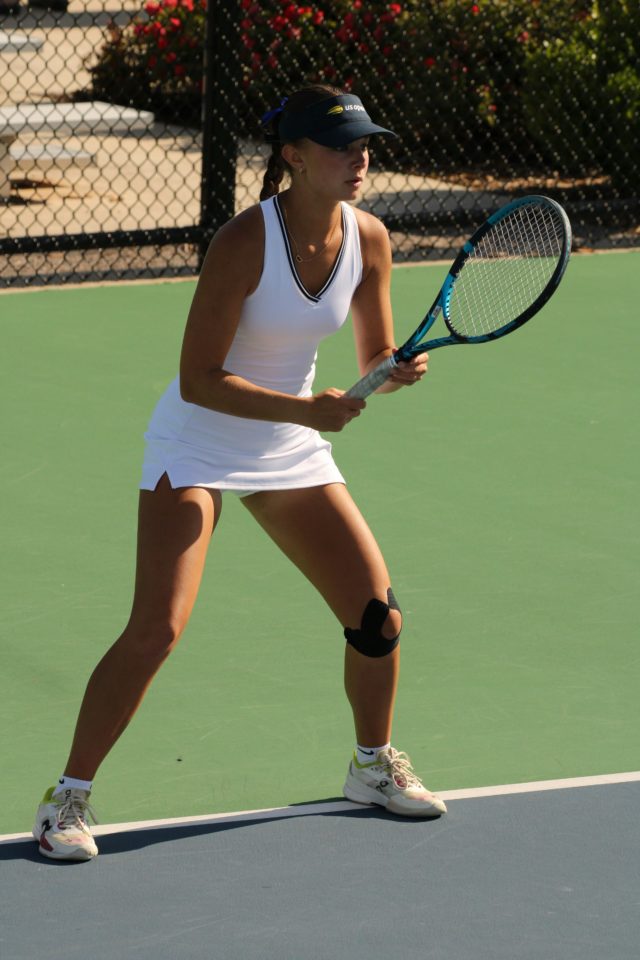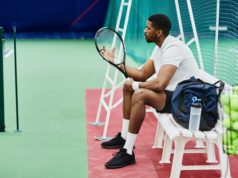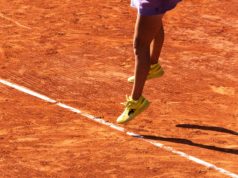By Mike Robertson, Director of Racquet Sports, TPC Sugarloaf
One of my favorite anecdotes over the last few years is the story of Kobe Bryant giving a reporter inside access to one of his legendary workouts. To be clear, I’m not sure how much or if any of this story is true, but the principle behind it has turned out to be priceless for me. The shortened version is that a reporter was invited to Kobe’s workout at 4:00 a.m. When the reporter arrived at 3:30 thinking he would beat him there, Kobe was already warming up. After 45 minutes of watching Kobe go through the most basic of footwork and ball handling skills, the reporter asked him why the best in the world would spend so much time on such basic skills. Kobe replied with “How do you think I became the best? By never getting bored with the basics.”
As a tennis player and a tennis coach, this hit home hard for me when I first heard it. I can sometimes have the mindset that there is some mysterious, magical cure for the forehand ailment of my students. I can get carried away thinking about pronating and kinetic chain or other cool-sounding terms when I should be thinking about watching the ball.
I am firsthand evidence of what it’s like to try to skip some steps. I want to blast that short ball for a winner, and I want it to happen now! Without moving my feet. Without taking my racquet back early. Without, dare I say it, watching the ball. I can get ahead of myself. The good news is that I don’t have to. Instead, I get to focus on mastering the most basic and fundamental elements that add up to a greater overall game. Here are some things that I think are universal when it comes to tennis that we tend to overlook or take for granted:
Watching the ball — I might “think” I’m watching the ball, and I might be. But my brain is thinking about how hungry I am and how soon I might be able to fix that. The next time you practice, test yourself. Are you watching the ball hit the strings? If you’re game to ruin a few balls, take different-colored markers and draw shapes on them. When you see the “blue square” on the arriving ball, call it out loud. It’s an engaging way to work on one of the most basic elements of tennis.
Moving my feet — We are all on different levels of athleticism so our standards of moving our feet might change with mobility. When I talk about moving my feet in a general sense, I’m talking about having a willingness to move my feet. Regardless of if I’m tired or I skipped breakfast or if I’m pouting about the double fault I made on set point … having a willingness to move my feet gives me a chance to compete when I’m not playing well.
Mental toughness — This can be different for everyone but, as someone who is looking ahead, I still must play “one point at a time.” Every single time I play tennis. This is a basic thought. This is why you could win a match 6-0, 6-0 and be mentally tired. To stay mentally engaged for two out of three sets is a real mental test.
As we go into the fall, challenge yourself to focus on some of the basic elements of the game. Leave the open-stance sliding backhands to Sinner and make sure that you’re creating good contact by watching the ball hit the sweet spot!
 ARA Teaching Professional Spotlight: Mike Robertson
ARA Teaching Professional Spotlight: Mike Robertson
Submitted by ARA
Title: Director of Racquet Sports, TPC Sugarloaf
Why are you a member of the ARA? It’s important to stay connected with your peers! As tennis professionals, we can get wrapped up in our own programs and forget there’s a whole racquets world right in our back yard.
What inspired you to be a tennis coach? I didn’t need any inspiration to become a tennis coach other than my love for the game. However, I had so many great coaches in my life that transformed me and the idea that I might be able to help others in the same way is what keeps me going.
What is your favorite memory of being a tennis coach in Atlanta? There are so many great memories, but there was something special about when our team completed our first Pro-Am week. We accomplished a lot of good for a lot of people.
How has tennis impacted your life? I started hitting balls when I was 2 and played my first tournament when I was 5. I really mean it when I say I’m a tennis lifer. Tennis has given me family (literally), friends, health, a purpose, and a career!
What is your proudest achievement? Receiving Director of the Year in 2019 from the GPTA was a very special honor. But navigating my team and our membership through the COVID era still stands out as some of the most rewarding challenges I’ve faced as a director of racquets.
What is one fun fact about you that most people would not know? I never skip a Sunday New York Times Crossword.
Who is your favorite professional tennis player and why? If you have a one-handed backhand, I’m yours. Dimitrov is holding the flag for us all right now.
What advice would you give young coaches in the industry? Being consistent and dependable will win you a lot of matches and set you apart from the flashy sideshows.
What do you do when you’re not coaching tennis? After tennis, LEGO is my passion. Clicking bricks is a great way to relax!




